Clematis "Cardinal Vyshinsky": description, planting, care and reproduction
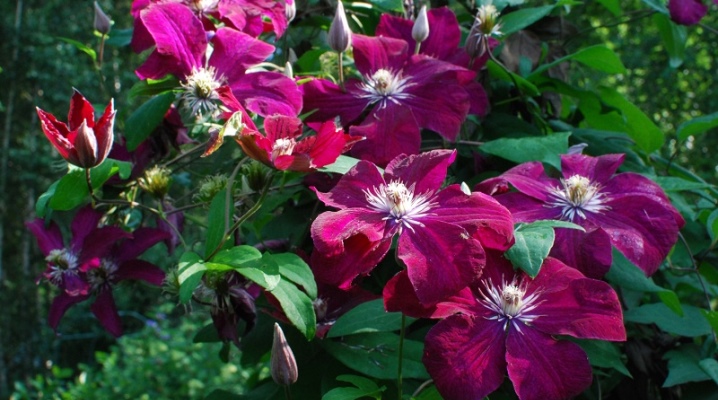
Clematis "Cardinal Vyshinsky" is a herbaceous plant. The dignity of culture is considered unpretentiousness in care, good tolerance to extremely low temperatures, the extraordinary color and beauty of large flowers that can decorate not only artificial structures, but also tree trunks.
Description of the variety
The liana got its name in honor of the Polish Metropolitan Stefan Vyshinsky, since the color of its flowers resembles the clothes of the high priests who dress in purple on the days of major religious holidays.
This type of clematis is a hybrid leaf-climbing plant that can decorate any surface suitable for this.

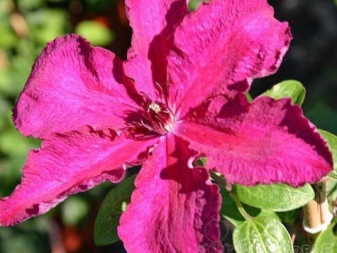
Features of the view
- Clematis has rather large leaves, slightly elongated ovoid with a pointed end. The color is bright green, the length of the oval is up to 8 cm.
- Large single flowers with 6 petals grow on long peduncles. They are able to form only on young branches. With proper care, their diameter reaches 20 cm.
- The color of flowers is mainly dark red, but turning into a deep purple color. At the same time, the appearance of the flower has an attractive contrast, because its stamens at the base are white, but have burgundy tops.
- Liana grows quite quickly, reaching a length of 3 m.The root system can have a span of up to 1 m.
The advantage of clematis in its long flowering - it can decorate the landscape for up to 4 months in a row, since flowering begins with the first summer days, and ends in early autumn.
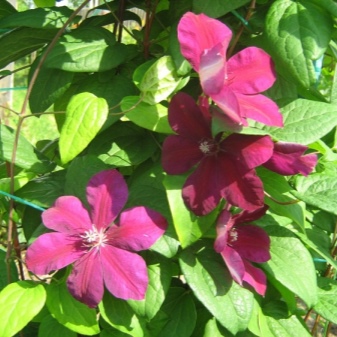
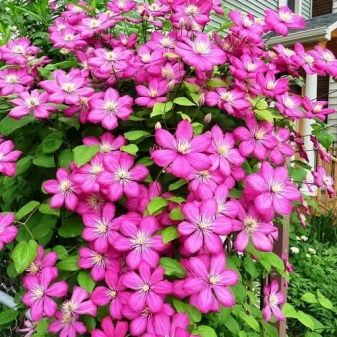
But this is not its only advantage for gardeners.
- A useful property of the plant is that it can be placed anywhere in the garden, regardless of the cardinal direction. Clematis is not too whimsical to the degree of light and can grow both in the sun and in the shade.
- The plant adapts equally well to growth in various containers, for example, in flowerpots. If the root system is damaged, it quickly recovers.
- Clematis is not afraid of an arid climate, as well as frost, reaching -35 degrees. Culture is not afraid of large temperature drops.
- Finally, the vine remains beautiful even at the age of 10-15 years after planting. This is a truly beneficial plant for connoisseurs of comfort and aesthetic beauty in their garden area.
Despite the amazing adaptability to various conditions and the immunity of clematis to heat and sun, gardeners are not advised to plant a vine in an open place. The beautiful and rich color of its petals is able to fade under the merciless UV rays.
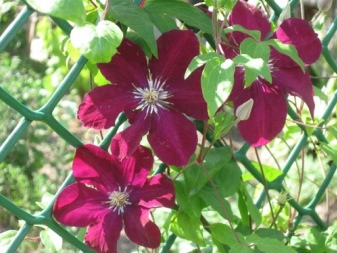

Breeding methods
Clematis can dilute in any suitable way.
- Seeds. To do this, they are harvested in summer or early autumn. First, they are sorted, choosing the highest quality - medium and large, removing small ones. After a cold hardening treatment for 2-3 months, they can be sown. In spring in open soil, in autumn - in greenhouse conditions. Sowing is carried out in containers, which are taken out into the street in the spring. Of course, the plant needs a nutritious soil, which should consist of fertile soil, humus, ash and sand.
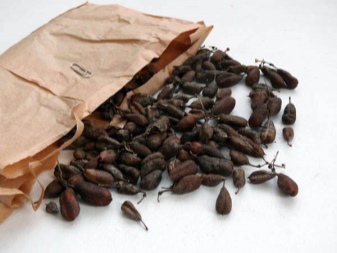
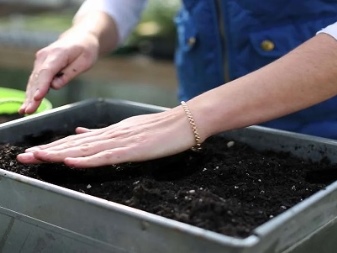
- By cuttings. New plants can be obtained by selecting the longest and most mature shoots with at least one node. They are twisted and buried to a depth of 10 cm in moist and well-loosened soil. After the crust forms, mulch the soil with leaf litter.Cuttings can be planted both in spring and autumn.
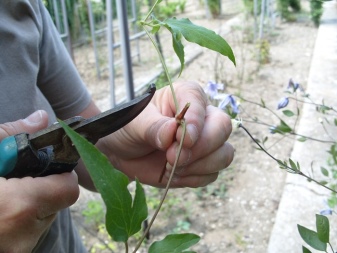

- Another way to propagate clematis is by dividing the bush. This is possible when the culture has reached the age of 7. In the spring, they dig up a bush with an earthen lump, and divide it along the trunk into several parts so that each has a high-quality root. The ground part of the plant is preliminarily removed, leaving up to 3 buds. They are planted in fertile soil.
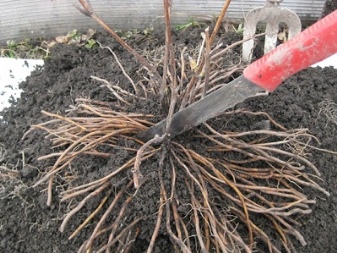
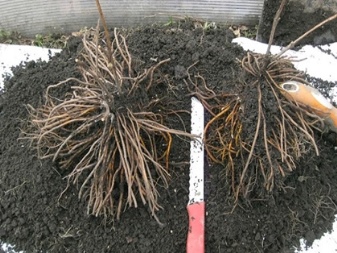
- The easiest breeding option is with layering. Thanks to this technology, the specific features of the plant are preserved, and it is possible to achieve flowering of the vines in the second year of cultivation. An uncircumcised healthy shoot is selected, laid in the ground and fixed in several places. Within 60 days, a new flower forms from each internode with two buds and gives roots.
Even inexperienced novice gardeners can propagate a liana with a branch. In other cases, you need to know how to plant a plant correctly, because the duration of its life and the intensity of flowering depend on this.

What do you need to know about boarding?
For planting in the ground, rooted cuttings or purchased container seedlings are mainly used, however, it can also be raised seedlings. Confidence in the success of the development of a young plant can be given by the quality of the planting material:
- fresh shoots, devoid of any defects and damage, reaching a height of at least 40 cm;
- no rot on the roots, collected in a lobe, the shoots should be 25 cm long, elastic and well-formed.
The root system should not be allowed to be open, but if this happens, then before planting in the ground, the roots should be immersed in an infused clay solution, it is possible with the addition of a small amount of organic matter.
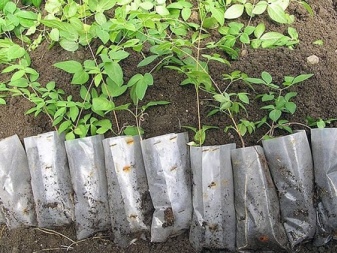
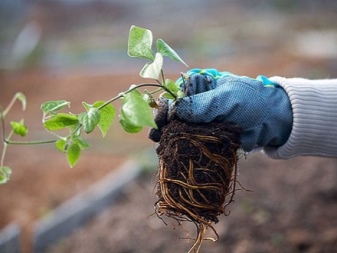
It is better to plant clematis in spring - ready-made seedlings with an earthen clod will take root perfectly during the entire growing season. But if the roots are open, then it is advisable to plant the vine before bud break and the beginning of sap flow, that is, at the end of March and in April.
The following requirements are imposed on the landing site:
- the distance from the landing hole to the supporting structures, residential and utility buildings, as well as the fence should be 0.5 m;
- it is important that clematis is protected from the wind - with strong gusts, it can break the stems and damage the flowers;
- between the bushes of culture make gaps of 1 m;
- planting should not be carried out in a swampy area or in a place where natural moisture accumulates - this can lead to decay of the root system.
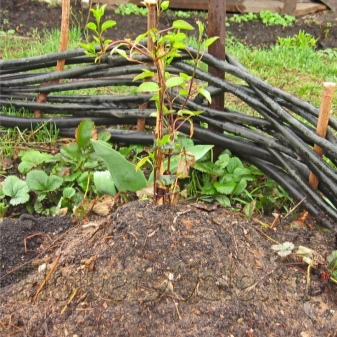
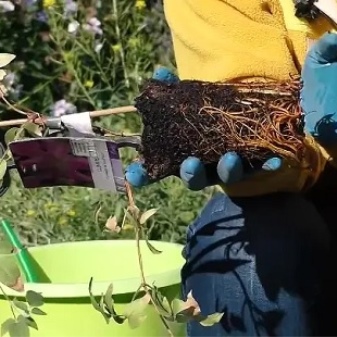
In the southern regions, experienced gardeners plant the plant in partial shade to protect them from overheating and petals fading. In colder climates, it makes sense to plant clematis in boxes or containers and display them on the south side of the house.
The soil suitable for lianas is fertile garden soil with low acidity and good drainage. Soil poor in minerals can be fertilized with humus, mullein, peat, humic acid. If alkalization is necessary, use dolomite flour, ground chalk or lime (0.3 kg per 1 sq. M.).
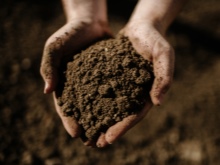
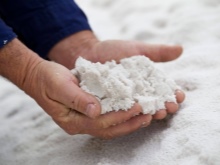

Clematis is planted in the following sequence:
- after deep digging in the ground, a landing hole is made with a depth of 60 cm and the same diameter;
- a drainage layer of coarse river sand, perlite or vermiculite 15 cm thick is placed on the bottom;
- add compost, wood ash, humus and half a glass of "Superphosphate";
- the prepared soil mixture is poured so that it occupies half of the hole;
- clematis is placed in the center, evenly distributing the root processes, and soil is poured;
- the root collar is immersed 8-12 cm, leaving the lower buds of the plant in the ground;
- after planting, they water and mulch the ground with peat, ash or crushed coal.
In advance, you can place a small column near the planting in order to tie up the plant in the future.

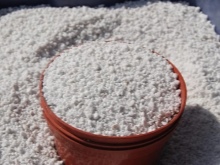
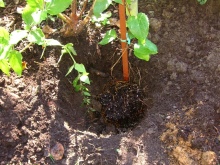
Follow-up care
Cultivation of Clematis "Cardinal Vyshinsky" is associated with several important procedures. Regular watering will help ensure seedlings develop roots and grow quickly - up to 2 times every 7 days. Young plants need about 10 liters of water, adult liana - 20-40 liters. The water should be warm, well warmed up, it is poured into the base of the bush, trying not to touch the leaves - if they get dirty, you can wash them with weak jets. The soil is loosened after each irrigation, after which new mulch is poured in the form of compost, peat or sawdust. Weeds are removed along the way.
During the year, young plants do not require fertilization, since the latter are already contained in the soil. In the future, the soil should be fertilized in early spring, before and after flowering to support the depleted plant, and again in the fall. If in spring and autumn clematis needs potassium fertilizing, then in other periods it is necessary to add rotted manure and other organic substances to the soil.
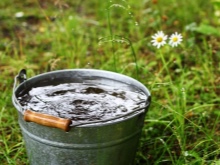

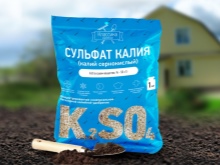
Clematis should be pruned periodically. The plant belongs to the 3rd pruning group. Since flowers form only on young shoots, the branches of the plant are shortened to the maximum length. The procedure is carried out in the fall, usually in October before wintering, when flowering is completely completed. All shoots are cut, without exception, leaving the length of the stems 30 cm, and at least 3 buds, from which fresh growth will begin in spring.
After pruning, applying phosphorus-potassium fertilizing to the soil and eliminating weeds, you can prepare clematis for wintering. To do this, the cut branches are tilted to the ground and laid in a pit, mulching with humus, covering with coniferous spruce branches or straw. If the climate of the region has little snow, they are additionally covered with non-woven agrofibre.
It is not recommended to use film or sawdust, as this can cause the roots to rot and overheat.
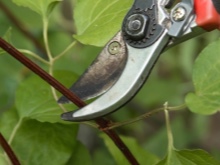

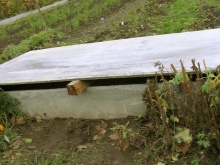
Knowledgeable gardeners advise to carry out preventive treatment of clematis to prevent powdery mildew and mold damage with the help of fungicides, as well as water the plant with a solution of lime (0.2 kg per 12.5 liters of water) in spring and spray it with diluted copper sulfate. This will prevent the bush from wilting and reduce the risk of various diseases, which are usually the result of over-watering.
Such a hybrid variety of clematis as "Cardinal Vyshinsky" is distinguished by its rapid growth, unpretentiousness and excellent appearance, and with proper cultivation, it can serve for a long time as a magnificent decoration for garden compositions. That is why both amateurs and professionals in gardening speak warmly about liana.
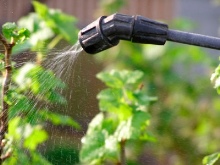
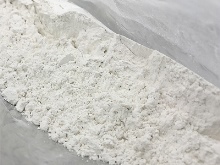
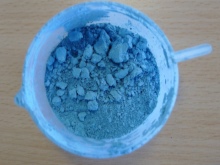
In the next video you will find additional information about the variety of clematis "Cardinal Vyshinsky".







































































































The comment was sent successfully.